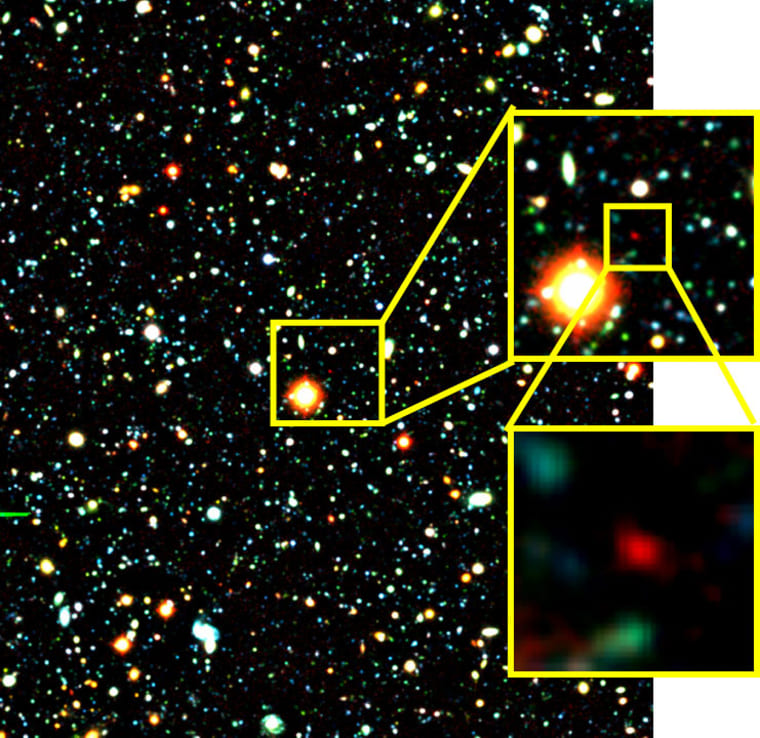Scientists said Wednesday that they have found the most distant galaxy yet, nearly 13 billion light-years away, in a discovery that could help explain how stars were formed at the dawn of time.
The galaxy, named IOK-1, is so far away that the light waves that reached Earth depict it as the system of stars existed shortly after the Big Bang created the universe 13.66 billion years ago.
That period, known to astronomers as the Dark Ages, saw the formation of the first stars and galaxies from elementary particles. Scientists had been unable to directly observe that time period until now.
Japanese astronomers working at the Subaru Telescope Facility in Hilo, Hawaii, developed a filter to pick up light that has been stretched over billions of years to the red end of the spectrum by an expanding universe.
The scientists, whose findings will be published Thursday in the journal Nature, said they had expected to find at least six galaxies similar to IOK-1, 12.88 billion light-years away.
A light-year is the distance that light travels in one year, about 5.88 trillion miles.
Instead they found only one object that could be identified as a galaxy, leading them to believe they were witnessing a process known as reionization, when the first stars cooked free-floating hydrogen atoms into the transparent plasma gas that fills much of the universe today.
According to this theory, light from other galaxies as old as IOK-1 is blocked by hydrogen atoms that were still whole and had not yet gone through reionization.
Another theory holds that few galaxies existed during this time, 780 million years after the Big Bang. It would mean that reionization had already taken place.
Either way, it shows that the universe changed substantially in the 60 million years that separate IOK-1 and the next oldest galaxies to be observed on Earth, the astronomers said.
The scientists found another object similar to IOK-1, but could not say if it was a distant galaxy or something else such as a black hole.
